Oxidations abound in this satisfying synthesis, with a delicate nitrile hydrolysis to finish
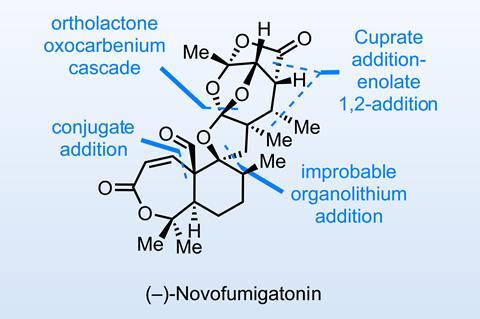
There’s an old joke among alkaloid chemists that each atom of nitrogen in a natural product target will add a year to your PhD. I haven’t heard such an axiom for oxygen, but I imagine that plotting the number of atoms against difficulty gives more of a bell curve. Having none certainly makes things very hard, as so many disconnections revolve around the carbonyl group.
For this reason, hydrocarbon natural products are tricky customers, and the latter part of these total syntheses is usually spent burning out all the unwanted atoms that were needed for the earlier bond-forming steps. Some oxygen, then, is desirable. But on the other end of the scale are things like the polyhydroxylated corticosteroid ouabagenin, which is extremely difficult to get out of both water (due to its solubility) and a round-bottom flask (due to its ability to complex with the borate in your borosilicate glassware). And don’t get me started on the horrors of carbohydrate chemistry.
Today’s column concerns another highly oxygenated target, novofumigatonin, whose recent total synthesis by Erick Carreira and coworkers at ETH Zürich in Switzerland features some creative chemistry (and, yes, a whole bunch of oxidations).1
The first key step is the addition of an organolithium to a ketone (figure 1). While that might not sound especially interesting, there are at least four big red flags: the organolithium is neo-pentyl and the ketone is sterically hindered, enolisable and embedded deep in a molecule that also contains a much more accessible nitrile. Indeed, with no additives, attack on this nitrile turns out to be preferred, and the epimerisable centre next to the ketone is also scrambled.
However, the addition of lanthanum chloride solubilised with lithium chloride (whose preparation, incidentally, is a little more involved than you might imagine) dramatically improves the reaction, resulting in an impressive yield and perfect diastereoselectivity. This reaction completes the carbon skeleton, allowing the team to start to ramp up the oxygen count, beginning with a triple ozonolysis and a Ley–Griffith oxidation to convert the initial lactol to the lactone.
Next, let’s skip ahead a little and look at the ortholactone synthesis, as that’s a functional group that we rarely think about. Perhaps the most obvious approach, condensing a diol with a γ-lactone, is met with a miserable 6% yield, which is low even by last-step-in-a-total-synthesis standards.
Changing tack, the team flips the disconnection, reimagining the lactone as a nucleophile that could attack an oxocarbenium ion – and, in turn, trap the nearby alcohol. The challenge is to identify a suitable oxocarbenium precursor that’s stable enough to survive a few steps but can be chemoselectively activated in an increasingly complex molecule.
Ultimately, the team takes inspiration from the glycosylation literature, settling on a thioacetal. When this precursor is treated with N-bromosuccinimide (NBS) and a little base, the expected cascade occurs in a modest yield, albeit a big improvement over the first attempt (figure 2).
From here, there are still a few non-trivial transformations remaining, including nitrile hydrolysis in the presence of the fragile lactone and ortholactone groups, formation of the final seven-membered lactone, and chemoselective cleavage of the rather stable dioxolane protecting group. As someone who’s been personally bedevilled by late-stage nitrile hydrolysis on more than one occasion (it’s rarely as easy as you think), I was particularly curious to see the team’s approach to this challenge. With the typical strong acids and bases contraindicated in such a delicate system, the team first performs hydration under mild conditions with a platinum catalyst, and the resulting carboxamide is then activated in a rather unusual reaction with trichloroisocyanuric acid that directly produces the expected ε-lactone.
Congratulations to the team on the synthesis of this highly oxygenated target!
References
1 EM Carreira et al., J. Am. Chem. Soc., 2025, 147, 31456 (DOI: 10.1021/jacs.5c10466)





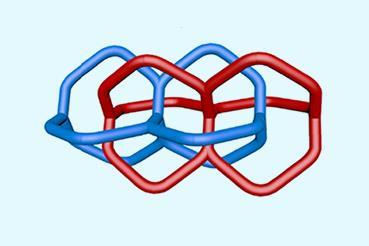
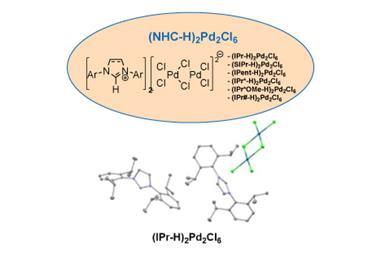

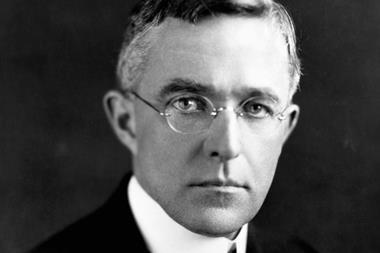


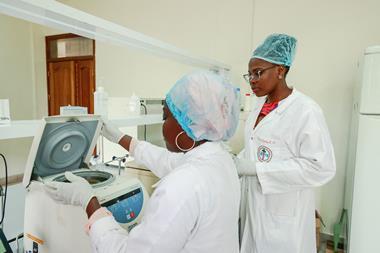


No comments yet